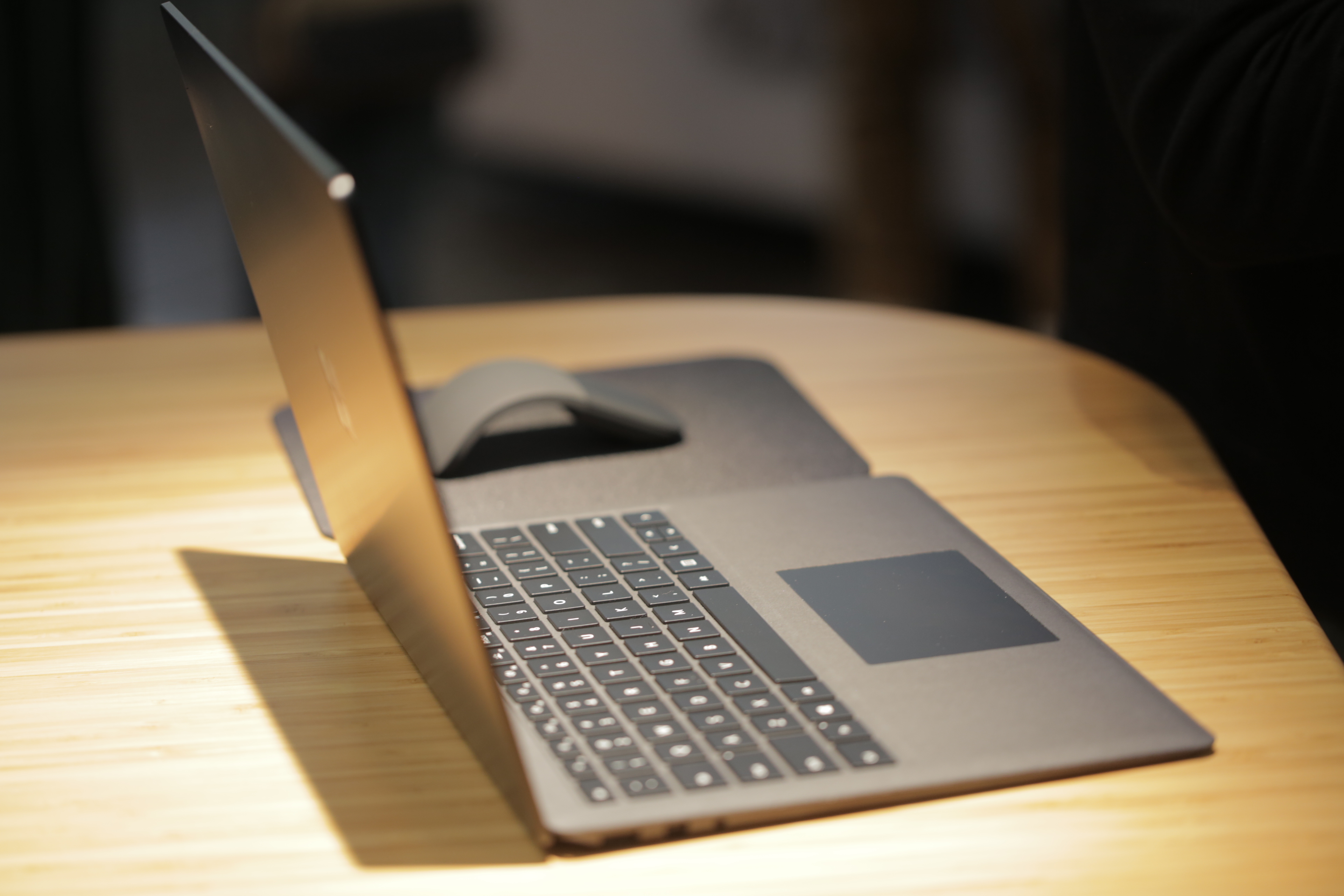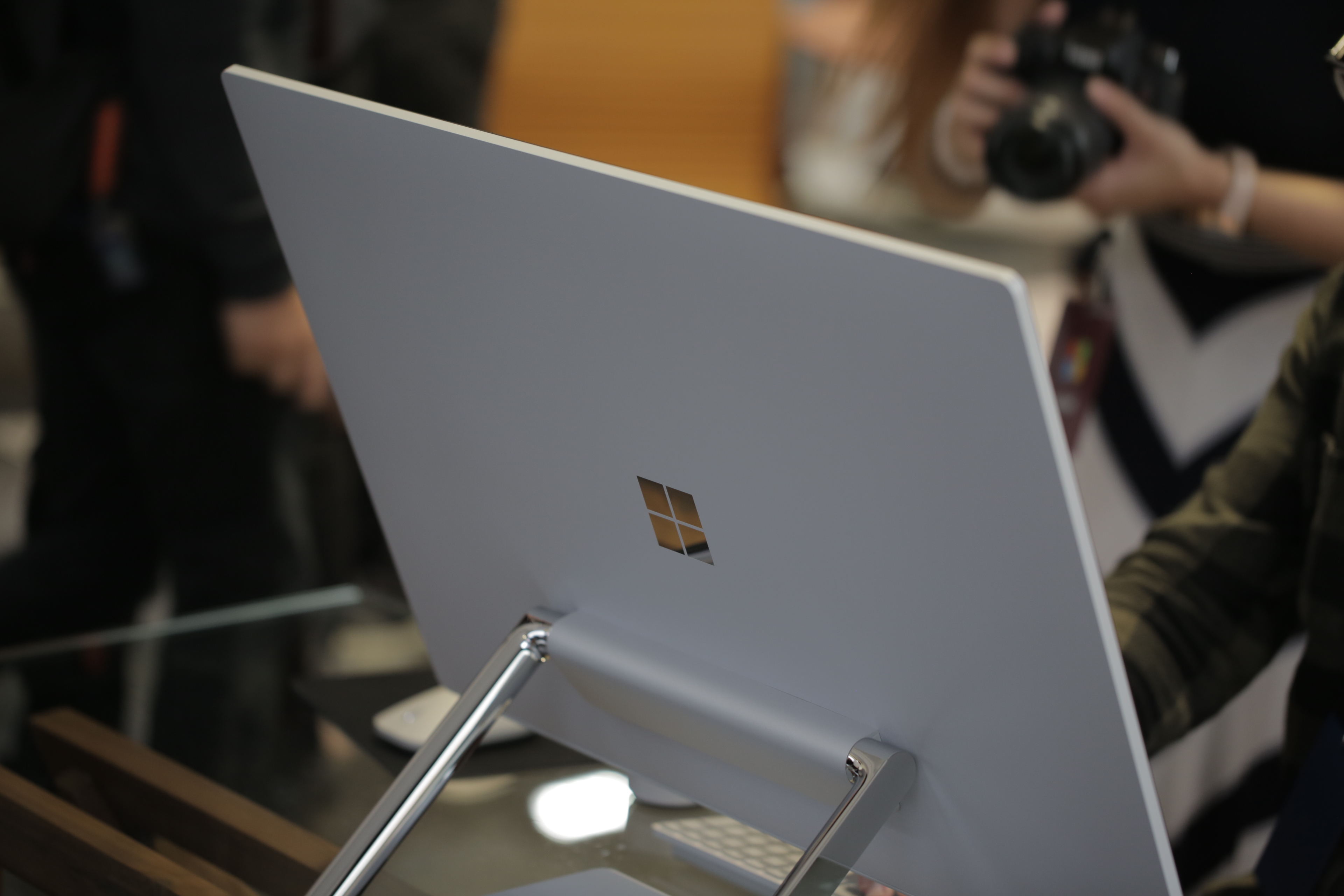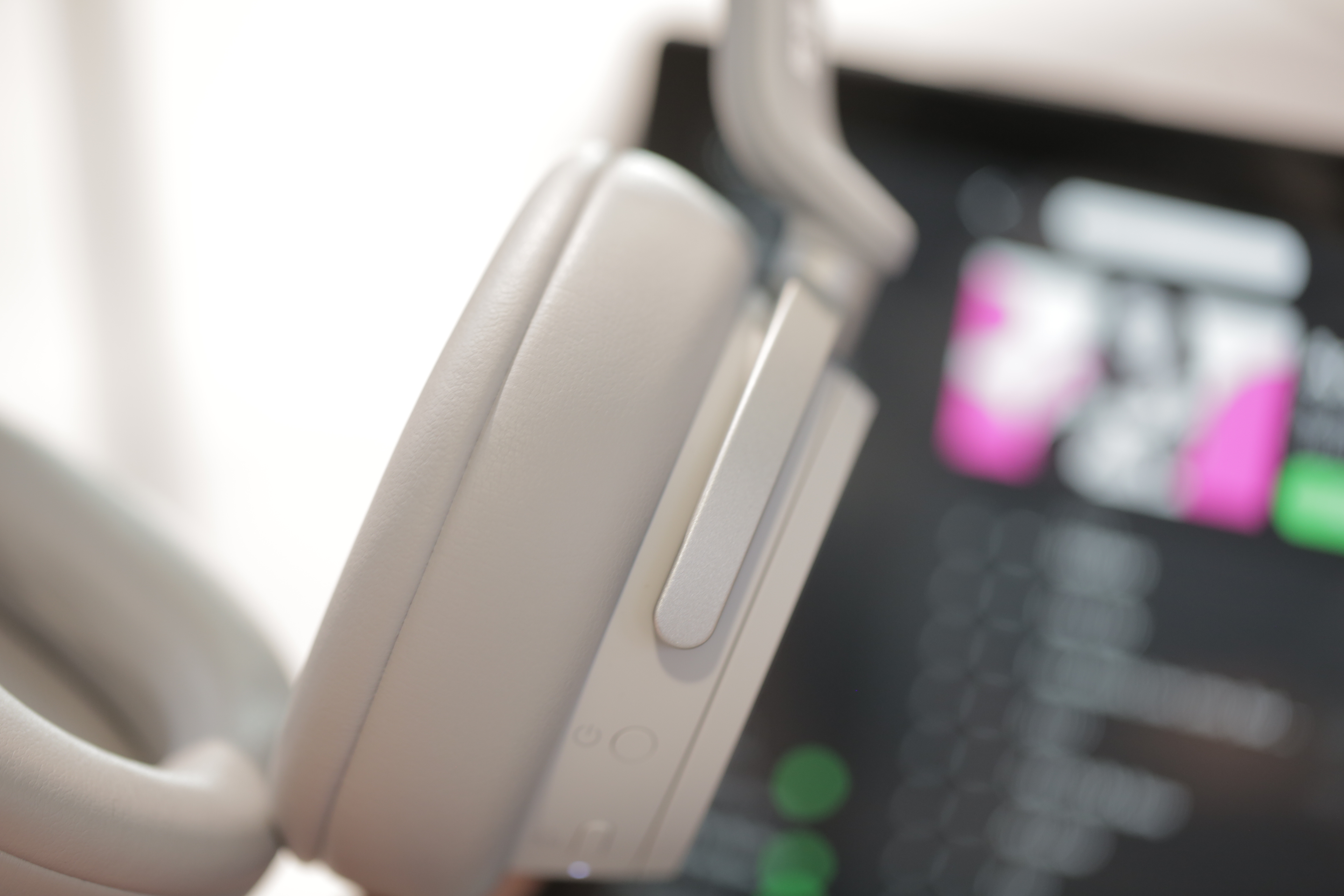Music
Trailers
DailyVideos
India
Pakistan
Afghanistan
Bangladesh
Srilanka
Nepal
Thailand
StockMarket
Business
Technology
Startup
Trending Videos
Coupons
Football
Search
Download App in Playstore
Download App
Best Collections
Technology
In what looks like a European first, the London-based early-stage venture capital firm Balderton Capital is announcing it has closed a new $145 million &secondary& fund dedicated to buying equity stakes from early shareholders in European-founded &high growth, scale-up& technology companies.
Dubbed &Balderton Liquidity I,& the new fund will invest in European growth-stage companies through the mechanism of purchasing shares from existing, early shareholders who want to liquidate some or all of their shares &pre-exit.&
&Balderton will take minority stakes, between regular fund-raising rounds, making it possible for early shareholders — including angels, seed funds, current and former founders and employees — to realise early returns, reinvest capital in the ecosystem, or reward founders and early employees,& explains the firm.
The move essentially formalises the secondary share dealing that already happens — typically as part of a Series C or other later rounds — which often sees founders take some money off the table so they can improve their own financial situation and won&t be tempted to sell their company too soon, but also gives early investors a way out so they can begin the cycle all over again. Otherwise it can literally take five to 10 years before a liquidity event happens, either via IPO or through a private acquisition, if it happens at all.
&The bigger picture is there are lots of shareholders who either want or need or have to take liquidity at some point,& Balderton partner Daniel Waterhouse tells me on a call. &Founders are one part of that… but I think the majority of this fund is more targeted at other shareholders — business angels, seed funds, maybe employees who left, founders who left — who want to reinvest their money, want to solve a personal financial issue, want to de-risk their personal balance sheets, etc. So we&re not obsessed with founders in this fund, we&re obsessed with many different types of early shareholders, which for many different reasons would like to get liquidity before the grand exit event.&
Waterhouse says that one of the big drivers for doing this now is that Baldertonanalysis suggests there is &a critical mass of interesting companies& that are in the growth stage: &businesses that have got a scalable commercial engine& and a proven commercial model. This critical mass has happened only over the last two years, which is why — unlike in Silicon Valley — we haven&t yet seen a fund of this kind launch in Europe.
&We think therenow about 500 companies in Europe that have raised over $20 million. That doesn&t mean they are all great companies but itan interesting, crude data point in terms of the scale they&ve got to. As a consequence, within that 500 we expect there to be quite a lot of interesting companies for this fund to help and we obviously have a pretty good lens on the market. Through our early-stage investing, and working with companies from the early-stage through to exit, and then obviously staying in touch with companies we don&t necessarily invest in, we have a pretty good sense of that from a bottom up perspective on how many opportunities are out there.&
He explained that there are three aspects behind the secondary funding strategy. First is that by investing via secondary funding, more companies will gain access to the &Balderton platform,& which includes an extensive executive and CEO network and support with recruitment and marketing. Secondly, it is good for the ecosystem as it will not only help relieve financial pressure from founders so they can &shoot for the next growth point& but will also let business angels cash out and recycle their money by investing in new startups. Thirdly, and perhaps most importantly, Balderton thinks it represents a good investment opportunity for the firm and its LPs as secondary liquidity is &underserved as a market.&
(Separately, one London VC I spoke to said a dedicated secondary fund in Europe made sense except in one scenario: that European valuations see a price correction sometime in the future promoted by the current trajectory of available funding slowing down, which he believes will eventually happen. &Funds are 10 years so they just have to get out in time,& is how said VC framed it.)
To that end, Waterhouse says Balderton is looking to do around 15-20 investments out of the fund, but in some instances may start slowly and then buy more shares in the same company at an even later stage. It will be managed by Waterhouse with support from investment principal Laura Connell, who recently joined the VC firm.
Struggling to see many downsides to the new fund — which by virtue of being later-stage is less risky and will likely command a discount on secondary shares it does purchase — I ask if perhaps Balderton is being a little opportunistic in bringing a reasonably large amount of institutional capital to the secondary market.
&No, I don&t think so,& he replies. &What we&ve seen in our portfolio is [that] the point in time when someone is looking for liquidity isn&t set on the calendar alongside when companies do fund raising. In particular as a company gets more mature, the gap between fund raises can stretch out because the businesses are more close to profitability. And so itnot deterministic. We want to just be there to help people who are actually looking to sell out of cycle in those points of time and at the moment have very little options. If someone wants to wait, they&ll wait.&
Finally, I was curious to know how it might feel the first time Balderton buys a substantial amount of secondary shares in a company that it previously turned its nose down at during the Series A stage. After pointing out that companies usually look very different at Series A compared to later on in their existence — and that Balderton can&t and doesn&t invest in every promising company — Waterhouse replies diplomatically: &Maybe we kick ourselves a bit, but we&re quite happy with the performance of our early funds and obviously we&ll be happy to add other new companies that are doing really well into the family.&
- Details
- Category: Technology
Facebook has said itfound &no evidence& that third-party apps were affected by the data breach it revealed last week.
Hackers stole account access tokens on at least 50 million usersby exploiting a chain of three vulnerabilities inadvertently introduced by Facebook last year. Another 40 million also may have been affected by the attack. Facebook revoked those tokens —which keep users logged in when they enter their username and password — forcing users to log back into the site again.
But there was concern that third-party apps, sites and services that rely on Facebook to log in — like Spotify, Tinder and Instagram — also may have been affected, prompting companies that use Facebook Login to seek answers from the social networking giant.
&We have now analyzed our logs for all third-party apps installed or logged during the attack we discovered last week,& said Guy Rosen, Facebookvice president of product management, in a blog post. &That investigation has so far found no evidence that the attackers accessed any apps using Facebook Login.&
&Any developer using our official Facebook SDKs — and all those that have regularly checked the validity of their users& access tokens & were automatically protected when we reset peopleaccess tokens,& he said.
Admittedly, Rosen said that not all developers use Facebookdeveloper tools, so the social network is &building a tool to enable developers to manually identify the users of their apps who may have been affected, so that they can log them out.&
Facebook spokespersonKaty Dormer said the company was &working on the tool now& but didn&t have a release date.
The breach also affected five million users in Europe, the company confirmed, where data protection laws are stricter and financial penalties are greater.
Under the newly installedGeneral Data Protection Regulation (GDPR), European regulators can fine Facebook up to $1.63 billion in fines — or four percent of its $40.7 billion in annual global revenue for the prior financial year — if itfound that Facebook could have done more to protect its users& data.
- Details
- Category: Technology
Read more: Facebook finds ‘no evidence’ hackers accessed connected apps
Write comment (100 Comments)Want excitement Heresomething approaching that. TodayMicrosoft October event wasn&t exactly a blockbuster, but product lead Panos Panay did mention that this is the most new Surface products the company has crammed into one event.
There was a lot of stuff to get through in the hour or so — though the majority of the announcements were spec bumps to existing products. In fact, aside from new matte black paint jobs, you wouldn&t really be able to tell the difference here.

That includes the expected lack of USB-C ports on the new products. Itan odd choice, to say the least — though &oversight& is probably the more operative word here.
As anticipated, the Surface Pro, Laptop and Studio all got spec bumps here. Starting at $999, the Surface Pro 6 is 67 percent faster than its predecessor, by Microsoftcount. Therealso a 267ppi display and a stated 13.5 hours of battery life.

The new Surface Laptop (which has been my own personal favorite in the line) gets even bigger bumps. The device is 85 percent faster than the first-gen, courtesy of the 8th-gen Quad Core Intel processor, while the battery should get 14.5 hours on a charge.

The Studio, arguably the most interesting Surface product to date, features a screen that38 percent brighter, with 22 percent more contrast. Inside are Pascal graphics cards and a 2TB solid state drive.

The Headphones are easily the most interesting announcement of the bunch. One, because the company somehow managed to keep them under wraps until todayevent and two, because Surface Headphones are a bit of a bizarre addition to the line. Even so, I was pretty happy with the brief time I spent with them.
[gallery ids="1725126,1725125,1725124,1725123,1725121,1725113,1725115,1725120,1725093,1725091,1725089,1725028,1725005,1725006,1724983,1724986"]- Details
- Category: Technology
Read more: Here are the newest additions to Microsoft’s Surface line
Write comment (90 Comments)The web, it turns out, is a fragile place. Companies, governments, educational institutions, individuals and organizations put up and take down sites all the time. The problem is that the web has become a system of record, and when links don&t work because pages no longer exist, the record is incomplete. With the help of volunteers from Internet Archive, Wikipedia has been able to recover 9 million broken linksand help solve that problem for at least one knowledge base.
The Internet Archive captures a copy of as many websites as it can to build an archive of the web. If you know what you&re looking for, you can search their Wayback Machinearchive of more than 338 billion web pages, dating back to the earliest days of the World Wide Web. The problem is you have to know what you&re searching for, and that can be problematic.
A Wikipedia contributor named Maximilian Doerr put the power of software to bear on the problem. He built a program called IAbot, short for Internet Archive bot. Internet Archive also credits Stephen Balbach, who worked with Doerr and the Internet Archive, tracking down and verifying Wikipedia archives and writing programs to fix data errors.
First IAbot identified broken links, those pages that returned a 404 or &page not found& errors. Once the bot identified a broken link, it searched the Internet Archive for the matching page, and when it found a copy, it linked to that, thereby preserving the link to the content, even though the original page or website was no longer available.
Over a three-year period, that software helped fix 6 million links across 22 Wikipedia sites. Wikipedia volunteers fixed an additional 3 million links by manually linking to the correct Internet Archive page, an astonishing amount of preservation work, and one that helps maintain the integrity of the web and provides an audit trail where one was missing.
In a blog post announcing the results of the project, Internet Archive reported that after studying the link-clicking behavior of Wikipedia users over a recent 10-day period, they found that the vast majority of links were going to Internet Archive pages, showing the power of this project to fix broken links in Wikipedia.
Graph: Internet Archive
A few years ago, I wrote a piece in which I lamented that the internet was failing the website preservation test. I concluded, &If we can send bots out to index the internet, it seems we should be able to find an automated technological solution to preserve content for future generations. At the very least, we are duty bound to try.&
If this is truly our system of record for government and society, then we need more projects like this to preserve the integrity of the system for future generations. The Internet Archive/Wikipedia project is certainly a positive step in that direction. Whatmore, the organization plans to build on this work across Wikipedia and other sites, while also working with editors or writers who wish to link to archived pages when live pages no longer exist.
Note: This article originally incorrectly referred to Internet Archive as Internet.org.
- Details
- Category: Technology
Read more: Internet Archive project helps restore millions of broken Wikipedia links
Write comment (100 Comments)In the nine months since Didi acquired the Brazilian ride-hailing startup 99 in a deal that valued the company at a reported $1 billion, the market for mobility and logistics startups in the Latin American region has changed dramatically.
The Didi deal was perhaps the first big acquisition for a Latin American startup in recent years, and a starting gun for whatbeen an extremely competitive race among startup companies to win the hearts and minds of consumers across the region.
The past year has seen the on-demand delivery service Rappi raise $200 million at valuation north of $1 billion from investors including the Russian firm DST Global. And just weeks ago,the Sino-U.S. investment firmGGV led a $63 million investment into Yellow, a company launched by 99 co-founders Ariel Lambrecht and Renato Freitas.
That deal wasthe largest Series A investment in Latin America to date, and a potential harbinger of things to come, given that the early-stage Mexico City-based scooter on-demand service, Grin, raised $21 million from the Asian and U.S.-focused investment firm DCM.
These deals also underscore the intensifying global competition between U.S. and Chinese technology companies and investors for larger shares of the worldwide market for technology-enabled goods and services.
Given all of the jockeying for position, we&re lucky to welcome to our inaugural Latin American event a group of investors and entrepreneurs to help us make sense of all these market moves.

Hans Tung, managing director, GGV Capital
Hans Tung, a managing partner at GGV Capital, has been on the Forbes Midas List six times (from 2013 to 2018) and is one of the top investors in Chinese startups (including Xiaomi and Musical.ly, acquired by Bytedance). Tung is also now investing in Latin America, having shepherded his firminvestment in Yellow.
Yellow co-founders Ariel Lambrecht (who was one of the masterminds behind 99) and Eduardo Musa, who previously served as chief executive of the Brazilian bike brandCaloi, will also be on hand to give us their sense of the mobility market and the role foreign and domestic companies are playing.
Finally, Tony Qiu, the general manager of Didi in Latin America, will be on hand to give us his perspective on this increasingly strategic market for the company.
With the capital flowing and competition growing, this is certainly one panel thatnot to be missed at our Startup Battlefield Latin America event. Get your tickets here.
- Details
- Category: Technology
In an event defined largely by spec bumps to existing product lines, the Surface Headphones were certainly a surprise. For one thing, the company did an admirable job keeping them under wraps, in spite of numerous leaks for just about everything else shown off at the event.
For another thing, they&re freaking Surface Headphones. Itjust weird, man.
I will say, however, I was actually pleasantly surprised by the things. If you&d told me a couple of years back that Microsoft was releasing a pair of headphones that borrow heavily from the Surface lineaesthetic, I probably would have kept walking.

But the company actually pulls them off pretty well, with a light gray aesthetic. They&re not the sexiest over the ear headphones, but they don&t look half bad. They&re also pretty comfortable, with generous over-ear cushioning and a lightweight design, so they won&t be a strain on the ears.
Unlike other portable Bluetooth headphones, they swivel freely, giving you a fair bit of movement in the process. Granted, the room was fairly cool, but they seem to breathe fairly well, so they shouldn&t be too stifling on a hot day.

I&m pretty happy with the headphones sound-wise. They&re rich and full with a decent low-end push. I&d like (and expect) to spend some more time with them in the near future, but so far so good — and the on-board noise canceling did a good job drowning out the scrum of nearby journalists.
I&m still getting used to the touch interaction. One tap plays and pauses, while holding down fires up Cortana — which is really one of the primary motivations for launching this product. Apple has AirPods, Google has Pixel Buds and now Microsoft has, well, headphones.

Cortana on a headset isn&t much of a standout for most users, but at least the companydeveloped a fairly nice pair of $350 headphones to compete with the likes of Bose, Sony and Samsung. No word on exact release date, but the new Surface peripheral should be &coming soon.&
- Details
- Category: Technology
Read more: Microsoft’s Surface Headphones up close and hands-on
Write comment (91 Comments)Page 4026 of 5614

 10
10





